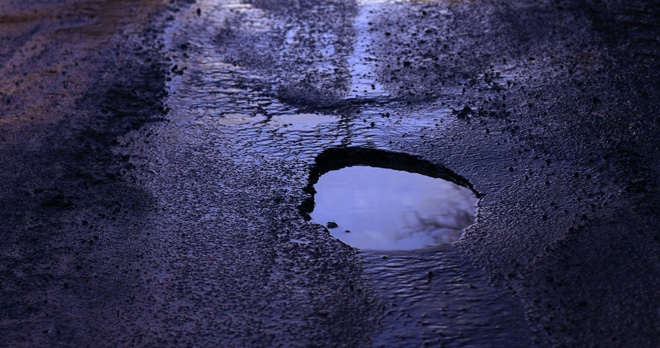What are my rights if I suffer an accident caused by a pothole, and how might the new policy for repairing them affect me?

Why is this an important question?
Potholes and defects in the road surface cause an obvious danger to cyclists. Most cyclists will have felt a nasty jolt when they have hit a pothole. Sometimes this causes people to lose balance, or even come off their bikes. It should be obvious that this can have catastrophic effects.
Not only are potholes dangerous, but they can also be very difficult to see and avoid. They are particularly difficult to see in the dark, in wet weather when there are puddles on the road, and in busy areas. Cyclists are also often looking for traffic signals, junctions, or motorists rather than potholes. This makes it easy to miss them.
Once you see a pothole, you then have to decide whether to swerve to avoid it. This may, in turn, create its own risks if motorists are passing too close, or if they are not providing enough space to react as required by the Highway Code.
This danger has been thrust to the forefront of my mind with recent news about government policy changes. Now, potholes shallower than 40mm are not required to be automatically filled in by local authorities. All despite the fact it's proven the breadth of a pothole is as dangerous as its depth.
The Department of Transport has been warned that, although there is a level of discretion in the policy, it is likely to cause further deaths.
The law around pothole maintenance
Cyclists injured because of a pothole often have the option to bring a claim. This claim is usually against the Highway Authority, on the basis that they have failed to maintain the highway. Often the defendant would therefore be a County Council or Local Authority. They have an obligation to do maintain roads by section 41 of the Highways Act.
Cyclists will usually be successful if the Local Authority can't prove they took reasonable steps to make the relevant part of the road safe. For more detail you can read section 58 of the Highways Act 1980.
A link to two cases involving potholes and another case involving a piece of concrete that was stuck to the highway is at the bottom of the page.
The test often applied by a court is to decide whether the road was dangerous to those using it in a normal way. So, if the defendant can't prove they had a suitable system of maintenance, the court is unlikely to agree they'd taken reasonable steps to keep it safe.
For example: in the cases summarised in my November 2017 legal update, one chap hit a pothole on a remote high mountain road in Snowdonia National Park. He made a claim for his injuries, but was unsuccessful; the court held that the defect was not one which the Council should reasonably be expected to have guarded him against.
Cases
You can read this exception that proves the rule, and more about potholes, in the November 2017 cycling law update here.